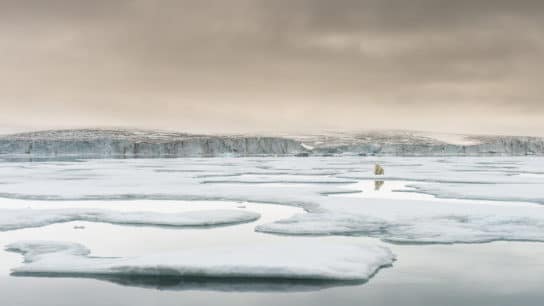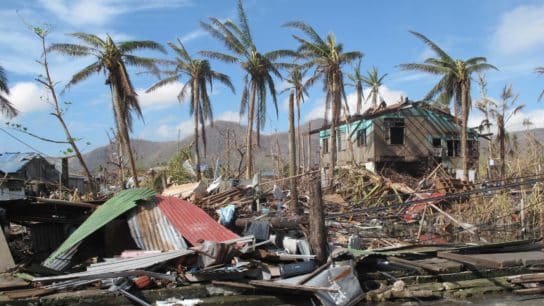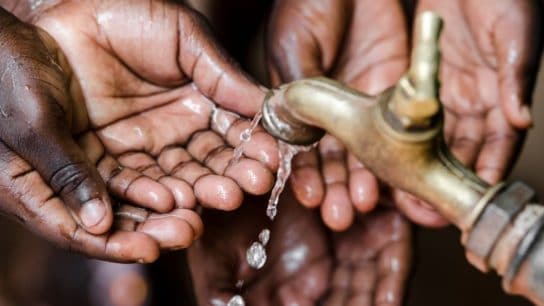Local authorities are rushing to clear Helene’s debris before Milton, which intensified back to a Category 5 hurricane after briefly downgrading to a strong Category 4 in the earlier hours of Tuesday, makes landfall.
—
Florida’s storm-battered Gulf Coast is once again preparing for what could be a “once-in-a-century” direct hit from Hurricane Milton as workers sprinted to clear out debris left over from Helene two weeks ago .
According to a bulletin published by the National Oceanic and Atmospheric Administration (NOAA) at 4 p.m. on Tuesday, Milton will bring “life-threatening storm surge” accompanied by large and destructive waves as well as heavy rainfall along the Florida Peninsula, leading to “catastrophic flash and urban flooding.” In some areas, storm surge levels are predicted to reach 10 to 15 ft (3-4.5m).
Milton could be “one of the most destructive hurricanes on record for west-central Florida,” according to the National Hurricane Center (NHC), which also warned that the hurricane could double in size before its expected landfall on Wednesday.
“We’ve never seen anything like this before,” Tampa’s police chief Lee Bercaw warned, adding that Milton “could be the storm of the century.”

Mandatory evacuations are underway across the west coast of Florida as a state of emergency has been declared in 51 of the state’s 67 counties. “If you choose to stay in one of those evacuation areas, you’re going to die,” said Tampa Mayor Jane Castor speaking on CNN on Tuesday. NASA and the Federal Emergency Management Agency (FEMA) also urged residents to leave the area immediately.
Federal Response
FEMA Administrator Deanne Criswell on Tuesday warned that hurricane misinformation and conspiracy theories, many of which can be traced back to White House Republican nominee Donald Trump and his supporters, are taking a heavy toll on hurricane responders and survivors.
“It’s creating distrust in the federal government, but also the state government, and we have so many first responders that have been working to go out and help these communities,” Criswell told reporters.
On its website, the agency fast-checked and debunked a series of falsities and direct attacks that have been rapidly spreading online, such as that FEMA only provides loans to disaster survivors or that it is blockading people in Florida and preventing evacuations.
FEMA has been stretched to its limits for years, despite the rapidly growing threat of climate change in the US . The agency, which has already tallied 19 billion-dollar weather disasters so far this year, declared an “immediate needs funding” moratorium in August, pausing nearly $9 billion in payouts for relief projects from prior disasters, effectively delaying recovery efforts.
Last week, Congress approved $20 billion for FEMA’s disaster relief fund as part of a stopgap spending bill to fund the government through December 20, though the measure left out billions of dollars in requested supplemental disaster funding. A total of one hundred Republican members of Congress voted against the bill. Some of them represent states that have been hit hard by Helene, including Florida Representative Matt Gaetz and South Carolina Representative Nancy Mace.
Compound Event
Scientists are also warning of the risk of a compound event as the US state is still recovering from Hurricane Helene. A compound event is the occurrence of two or more climate-related factors in close successions, or even simultaneously, which combined result in a more significant impact than if each factor were considered in isolation.
A 2023 study published in Nature Climate Change found that “the chance of sequential [tropical cyclones] hazards has been increasing over the past several decades at many US locations,” with climate change potentially causing “unprecedented compounding of extreme hazards.”
Experts are worried that Helene’s debris could be a major hazard during Milton. This has prompted authorities to rush cleaning operations before the hurricane, currently a Category 5 hurricane, makes landfall in highly populated Tampa Bay.
Supercharged Hurricanes
According to NASA, Milton is the fastest Atlantic hurricane to intensify from a tropical depression to a Category 5 hurricane on the Saffir-Simpson Hurricane Wind Scale, the most widely recognized risk assessment method for hurricanes. Packing winds of at least 157 mph (252 km/h), Category 5 hurricanes, the highest level on the scale, are expected to cause “catastrophic” damage and loss.
As of 7 p.m. on Tuesday, local time, Milton’s maximum sustained winds were near 165 mph (270 km/h) with higher gusts.
NASA added that the hurricane, like Helene, was “fueled by unusually warm water in the Gulf of Mexico.”
Hurricanes – also known as typhoons in the northwestern Pacific and cyclones in the Indian Ocean and South Pacific – are a rather common, natural weather phenomenon, though there has been a significant increase in their intensity in recent decades, which scientific observations link to human-made climate change.

The link between warming oceans and stronger storms is “strong and physically based,” explained atmospheric scientist Kevin Trenberth. “[O]ver the oceans, where there is ample water at the surface, the water vapor goes up at 7% per 1C warming, the same rate as the atmosphere’s ability to hold water vapor. Accordingly, all storms reach out and gather in the available water vapor, which fuels the storm, and it rains harder.”
More on the topic: What Are Tropical Cyclones? Hurricanes and Typhoons, And Their Link to Climate Change, Explained
This story is funded by readers like you
Our non-profit newsroom provides climate coverage free of charge and advertising. Your one-off or monthly donations play a crucial role in supporting our operations, expanding our reach, and maintaining our editorial independence.
About EO | Mission Statement | Impact & Reach | Write for us














